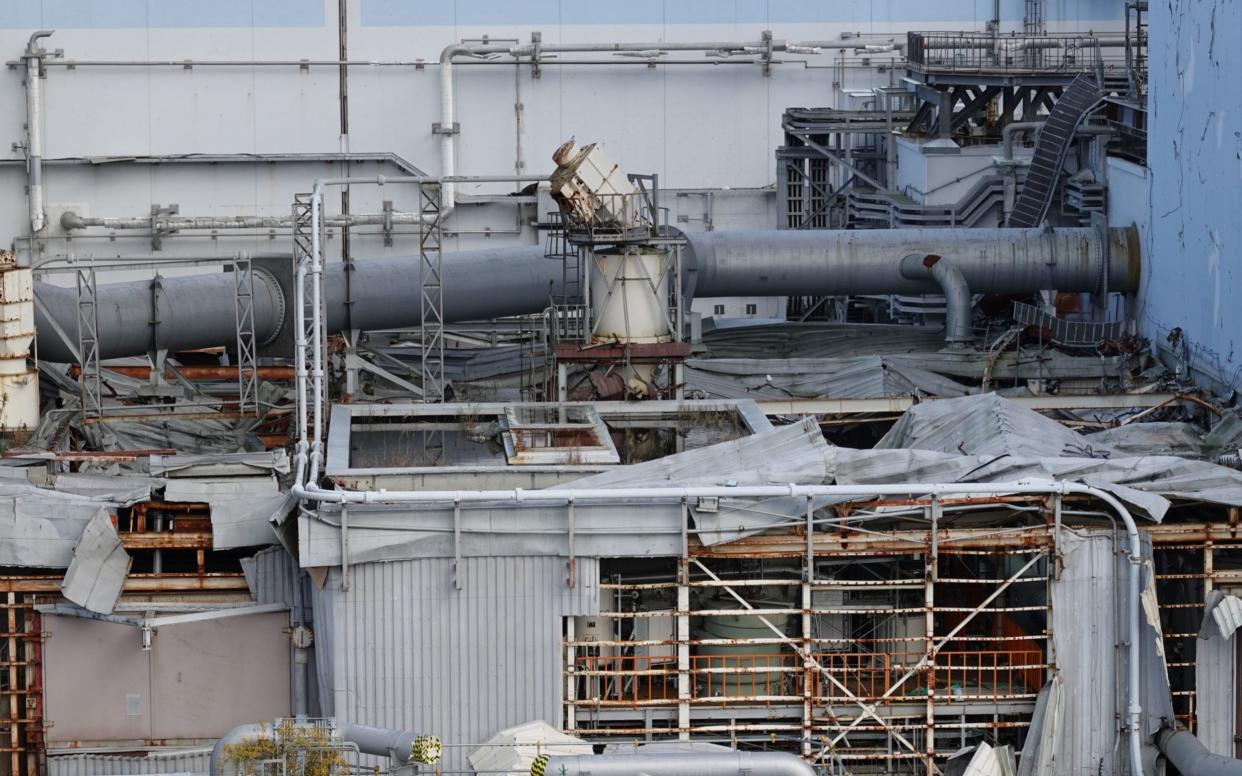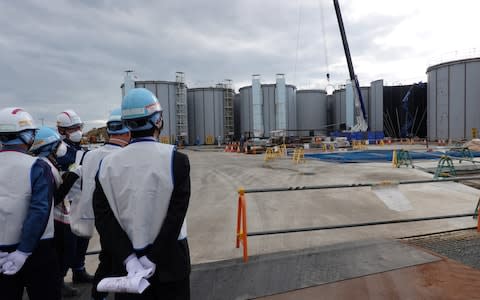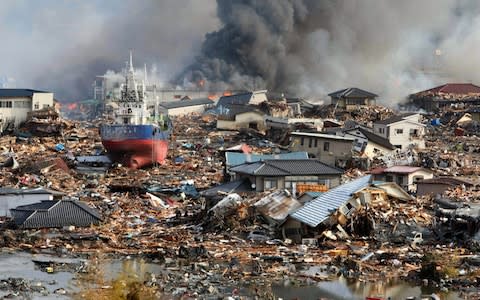Fukushima accused of cover-up over 'contaminated' water set to be poured into the Pacific

The Japanese government has been accused of a cover up after it refused to allow independent testing of water from the Fukushima power plant that is likely to be released into the Pacific Ocean.
Officials at the industry ministry on Monday said the water stored at the crippled nuclear site was "safe" to release into the Pacific ocean, despite concerns about radioactive material from environmental and citizens' groups.
Following a recent visit to the plant, the Tokyo Electric Power Co (Tepco) told The Telegraph that concerns over security prevented independent testing.
"Other organisations are not permitted to carry out tests of the water”, Hideki Yagi, a spokesman for Tepco, told The Telegraph.
“If we are going to allow external organisations to test the treated water then we would need to go through very strict procedures and due process because that water is contaminated. If it is taken outside this facility, then there need to be strict regulations”.

Both Greenpeace and the Citizens’ Nuclear Information Centre (Cnic), an anti-nuclear lobbying group, suggested that Tepco may be trying to cover up true scale of contamination of water stores at the site.
Shaun Burnie, senior nuclear specialist for Greenpeace, says the refusal to permit third-party testing only serves to raise new concerns about plans to discharge the water into the ocean.
“Moving nuclear material always carries risk, but for the purpose of independent analysis it would be justified”, he said. “TEPCO has lost trust across society in Japan as well as in the international community, including in South Korea, and providing samples for analysis would be in their best interests - unless they are covering something up.
“There are many questions about the effectiveness of Tepco's ... technology so providing samples that could verify their reports on content would go some way to demonstrating their commitment to transparency”, Mr Burnie added.
“It won't remove doubts that they are covering up major issues at the site - but would be an improvement on the current situation”.
Hideyuki Ban, co-director of Cnic, said: "There would need to be lots of checks because there is a lot of water, but right now it looks very much to the outside world that they are trying to cover something up - as they have a long history of doing - and it would be very much in their best interests to be transparent on this.
“If they don’t, how will they ever get back any of the public trust that they have lost completely since the accident?” Mr Ban said.

During a recent visit to the plant, Tepco officials told The Telegraph that a decision on how to dispose of the water must be made soon as tanks at the site are already near capacity and there is limited space to construct new storage facilities. The company estimates that capacity will be reached in the summer of 2022.
The industry ministry on Monday told a government committee considering methods to dispose of the more than 1 million tons of water presently being stored in hundreds of tanks at the site that the risk to humans associated with releasing the water into the ocean would be “small”.
Discharging the water into the Pacific over the course of a year would amount to between just one-1,600th and one-40,000th of the radiation to which humans are naturally exposed, the ministry officials told the committee.
Estimates indicate that annual radiation levels near the release point after a release would be between 0.052 and 0.62 microsievert at sea, the officials said, and 1.3 microsieverts in the atmosphere. That compares with around 2,100 microsieverts that humans come into contact with each year in everyday life.
The ministry how emphasised that no final decision has been reached on how or when the water will be disposed of.
The water became contaminated with radiation when it was used to cool three of the six reactors at the plant that suffered melt-downs after being damaged in the March 2011 earthquake and tsunami. Ground water is also seeping into the basement levels of the reactor buildings, with an additional 120 tons of water accumulating every day.
Tepco was forced to admit earlier this year that efforts to remove varying amounts of 62 radionuclides - including strontium, iodine, caesium and cobalt - from the water through the ALPS equipment had not been completely successful.
Officials of the company have added that testing of the water is presently carried out by Tokyo Power Technology Ltd, which it claims has advanced analytical skills and “very high” reliability. Tokyo Power Technology is a subsidiary of Tepco that was set up two years after the Fukushima disaster.

Monitoring is also conducted by the government-funded Japan Atomic Energy Agency and the Japan Chemical Analysis Centre.
Azby Brown, lead researcher for Tokyo-based monitoring organisation Safecast Japan, a group that monitors radiation, said the lack of transparency means the risks to marine life of releasing the water are relatively unknown.
"We don't have enough data to evaluate the impact that any release with those concentrations will have on marine life", he said..
"The expected doses that they are talking about are quite low and therefore the amount of radiation that is absorbed into marine life and then into humans when they eat fish would also be quite low
"But that has to be full of caveats because the way that information has been presented is confusing and not transparent so ordinary people do not understand and cannot make informed decisions."

 Yahoo News
Yahoo News 
